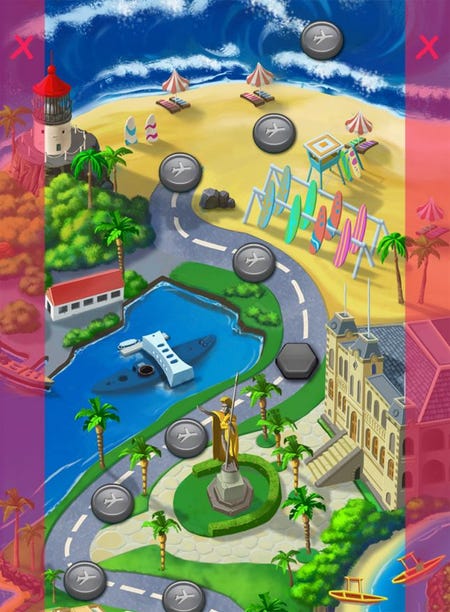Trending
Opinion: How will Project 2025 impact game developers?
The Heritage Foundation's manifesto for the possible next administration could do great harm to many, including large portions of the game development community.

Featured Blog | This community-written post highlights the best of what the game industry has to offer. Read more like it on the Game Developer Blogs or learn how to Submit Your Own Blog Post
This article includes a comprehensive list of specs for mobile game Saga Map creation. If you are making map art for a client, or need assign such a map creation task to your team, you can use this article for initial communication.


We’re often contacted by game development companies lately, asking our team to create saga maps for their mobile games. The routine is that I would write a document of the map creation specs, send to the client to let them know what they should specify, that our designer team could start working.
To free me from this tedious routine, I decide to write a comprehensive article, to include all the specs. And here it is. Next time, I only need to send this link to my client. And I hope it would be helpful to you too, if you are also working for a client, or need assign such a map creation task to your team.
The specs in this article are only useful for defining a project in general. And nowadays saga map are made up by zones (or worlds, themes, areas, they are the same concept). To design each zone, the team would need separate zone description document. I will come up with another article to cover this topic.
Please note: all the map art in this articles are screenshots of mobile games, for illustration of the points; I don’t thus implicitly claim these artworks are created by our team.
Story/theme
Is the story about witchcraft, desserts or holidays?

Art Style
Should the artwork look like vector art, hand painting, 3D render or realtime 3D image?

Degree of finish
The degree of polish-up –depends on how much budget you decide to pour into it.

For the above three points, it’s best to give the designer team reference pictures from other games, alongside with text descriptions.
Map format

There are many formats to choose from: vertical, horizontal, roaming, etc. What format to use depends on many factors: the screen of the gaming platform, the way of gameplay and storytelling you prefer, and if it’s easy to add new map zones. And now for mobile games, the most popular format is vertical.
Image resolution and cropping area
Image resolution depends on the game platform/s. For mobile games, 1080 x 1920 px becomes a popular size; And many developers want their games to work on ipad pro too, it’s 2048 x 2732 px.
While the screen of phones are generally narrower than tablets, the same piece of map art would use some cropping on both side off the screen, to fit better:

For iphone/ipad map, suggested cropping area width is 110~140 pixels.
Road width & Level node size

The width of the road is measured by pixels.
Generally, the width of the road also determines the size of the level node.
Level node density
This index is usually understood as how many level nodes you can see on a screen.
Number of level nodes per zone
As saga map are made up by zones, there would be a rough number of levels in a zone. With the size of level nodes, and node density decided, it could easily work out the length of a zone. It’s usually measured by screen height, for example, x1.5 and x2. Of no doubt the length of a zone affects budget very much. Generally, a map zone of x1.5 screen length carries 15~25 levels.
General scale of elements

Degree of elements clutter

Camera angle

Zone transition
There are many forms of transition between adjacent zones, for example:

The way of transition to use affects map planning very much.
For maps support zoom-in/out, such as that in Cookie Jam! You must specify the above specs, under the max zoom-in: Level node size, elements scale, whole map resolution,etc.
Usually there would be some additional requirements, for example:

I understand this article is most useful for vertical format maps. For there are too many different map formats, if I include all the specifications here, the organization of the article would be quite chaotic. I think you can work out the specs of other map formats based on my points.
Read more about:
Featured BlogsYou May Also Like